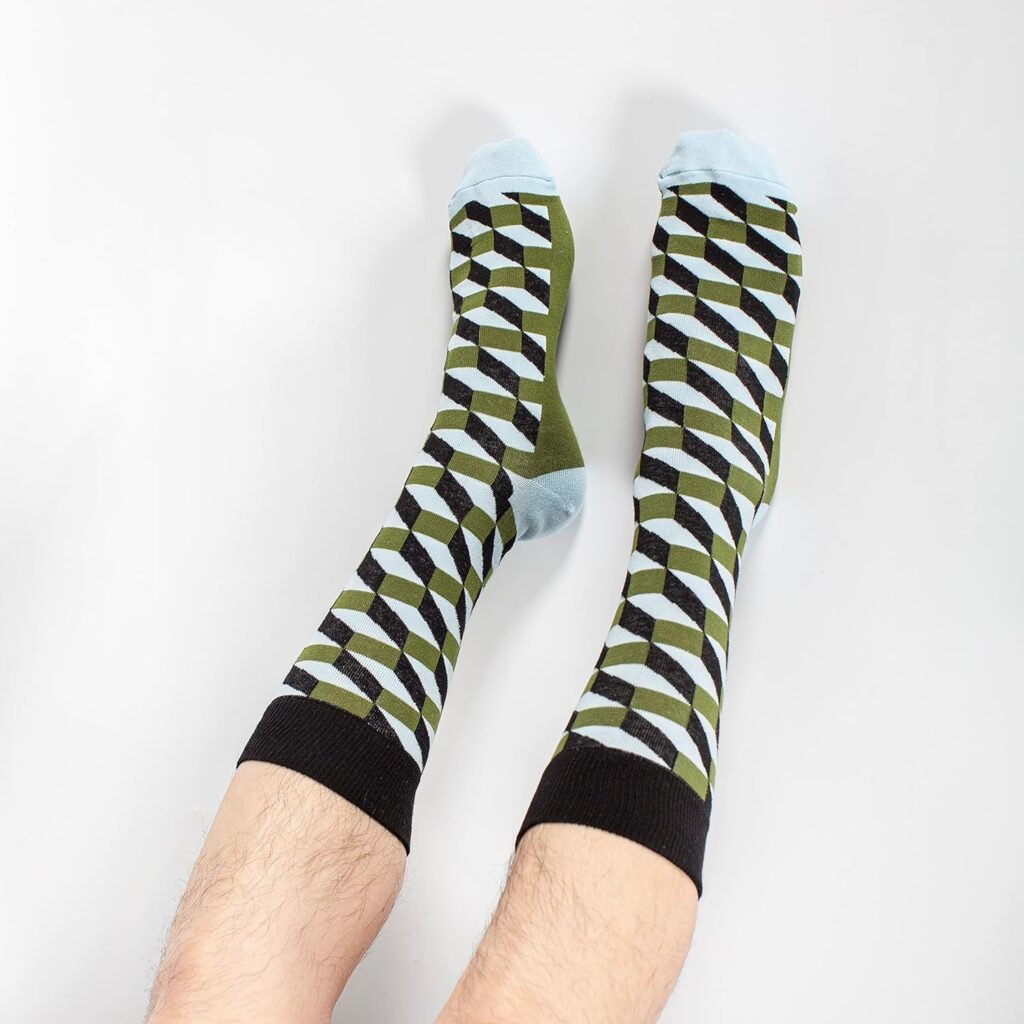Taking care of your socks may not be at the top of your to-do list, but it should definitely not be ignored. Socks are an essential part of our everyday attire, providing comfort and protection to our feet throughout the day. However, they often face a tough battle against wear and tear, leading to premature deterioration. This article will provide you with some essential tips on how to effectively maintain your socks, ensuring they remain in great shape and provide you with long-lasting wear.

This image is property of images.unsplash.com.
Find more products like these on Amazon!
Choosing the Right Socks
Material
When it comes to choosing the right socks, one of the first factors you should consider is the material. The material of the socks can greatly affect their comfort, durability, and breathability. Common materials for socks include cotton, wool, nylon, and polyester. Cotton socks are soft and breathable, making them a great choice for everyday wear. Wool socks are ideal for colder climates as they provide excellent insulation and moisture-wicking properties. Nylon and polyester socks are often used in athletic and performance socks, as they are lightweight and quick-drying.
Size and Fit
Another important aspect to consider is the size and fit of the socks. Ill-fitting socks can lead to discomfort and even blisters. It is essential to choose socks that are the right size for your feet. Most socks come in standard sizes, such as small, medium, and large. However, it is recommended to check the specific sizing guide for each brand as sizes may vary. Additionally, consider the elasticity of the socks. Socks with elastic bands around the cuff will help prevent them from slipping down during wear.
Style
While style may not be the most crucial factor in choosing socks, it can certainly add a touch of personality to your outfit. Socks come in a wide variety of colors, patterns, and designs. Whether you prefer solid colors, bold patterns, or fun novelty socks, there are endless options to choose from. You can match your socks to the color of your outfit for a coordinated look or choose contrasting colors to make a statement. Let your personal style shine through your choice of socks!
Purpose
Lastly, consider the purpose for which you will be wearing the socks. Are you looking for everyday socks, athletic socks, or specialized socks for specific activities? Understanding the purpose of the socks will help you narrow down your options. Everyday socks should be comfortable and breathable, while athletic socks may need to provide extra support and cushioning. Specialized socks like compression socks, thermal socks, or silk socks have specific functions that cater to different needs. Assessing the purpose of the socks will ensure you make the right choice for your intended use.
Washing and Drying Socks
Separate Colors
To keep your socks looking their best, it’s important to separate the colors before washing. This will prevent bleeding and discoloration between different colored socks. Sort your socks into separate laundry piles based on their color: whites, lights, and darks. By keeping the colors separate, you can maintain the vibrancy of your socks for longer.
Handwashing vs. Machine Washing
When it comes to washing your socks, you have two main options: handwashing or machine washing. Handwashing allows for more delicate care, especially for socks made of delicate materials like silk or cashmere. It is recommended to soak the socks in lukewarm water with a mild detergent, gently squeeze and rinse them, and then lay them flat to dry. Machine washing, on the other hand, offers convenience and efficiency. Place similar-colored socks in a garment bag or sock-specific laundry bag to prevent them from getting lost or tangled during the wash cycle.
Temperature Settings
The temperature at which you wash your socks can also affect their lifespan. Hot water can cause shrinkage, fading, and damage to elastic fibers, so it is best to opt for lukewarm or cold water when washing your socks. Cold water is particularly gentle on the socks and helps to preserve their colors and shape. For socks that are heavily soiled or used for athletic purposes, you may want to select a warmer water setting to ensure a thorough clean.
Avoiding Bleach
Bleach may be a common household cleaning agent, but it can be harmful to your socks. Bleach can weaken the fibers of the socks, leading to holes and tears over time. It can also cause discoloration and fading, especially on colored socks. Instead of using bleach, opt for a color-safe detergent or alternative stain-removing methods to keep your socks clean and fresh.
Drying Methods
Proper drying methods are essential to avoid unnecessary damage to your socks. Avoid wringing or twisting the socks excessively, as this can misshape them and create wrinkles. Instead, gently squeeze out the excess water and reshape the socks before drying. It is advisable to air dry your socks whenever possible, as high heat from the dryer can cause shrinkage, fading, and damage to the elastic. If you must use a dryer, opt for a low heat or delicate setting to minimize the risk of damage.
Find more products like these on Amazon!
Storing and Organizing Socks
Pairing Socks
One of the simplest ways to organize your socks is by pairing them before storing. Pairing socks ensures that you always have a matching pair ready to wear, saving you time and frustration in the morning rush. After laundering your socks, take the time to match them together based on color, pattern, and style. Fold them together or roll them into a ball-like shape, and they will be neatly organized and ready for use whenever you need them.
Using Sock Organizers
If you find that your sock drawer is constantly in disarray, consider investing in sock organizers. These handy tools come in various forms, such as sock dividers, drawer inserts, or hanging organizers. Sock dividers allow you to separate your socks into different compartments, making it easy to find and access the pair you want. Drawer inserts help keep your socks neatly folded and prevent them from getting mixed up. Hanging organizers with pockets provide additional storage space and keep your socks visible and easily reachable.
Avoiding Prolonged Compression
Extended compression can cause socks to lose their elasticity and shape over time. To avoid this, it is advisable to avoid keeping your socks rolled up or twisted for extended periods. If you prefer to roll your socks for storage or travel, make sure to unroll and unfold them regularly. Keeping your socks in their natural shape will help maintain their elasticity and ensure a comfortable fit when worn.
Rotating Sock Usage
Regularly rotating the use of your socks is an effective way to extend their lifespan. By alternating between different pairs of socks, you allow each pair to rest and recover between wears. This helps to prevent excessive wear and tear on any particular pair, ensuring that they stay in good condition for longer. Additionally, rotating your socks will also help prevent the buildup of odor-causing bacteria, as the socks have time to fully dry and air out before being worn again.
Preventing Wear and Tear
Trimming Toenails
While it may seem unrelated, keeping your toenails trimmed can actually help prevent wear and tear on your socks. Long toenails can catch on the fabric of your socks, causing snags and holes. To avoid this, regularly trim your toenails to a manageable length. By maintaining well-groomed toenails, you can minimize the risk of accidental damage to your socks and ensure a longer lifespan for both your socks and your toes.
Avoiding Rough Surfaces
To prevent unnecessary friction and damage to your socks, it is important to avoid walking on rough or abrasive surfaces while wearing them. Rough surfaces such as concrete, gravel, or rough carpeting can cause excessive wear and tear on the soles of your socks. Such friction can lead to thinning of the fabric and, eventually, holes. If you are in an environment that necessitates walking on rough surfaces, consider wearing thicker or reinforced socks to provide extra cushioning and protection.
Removing Stains and Odors
Stains and odors are common enemies of socks, but they can be effectively dealt with through proper cleaning methods. For stubborn stains, pre-treat the affected area with a stain remover or a mixture of detergent and water before washing. To combat odors, you can add a small amount of baking soda to your wash cycle or use a vinegar solution as a pre-soak. These methods help eliminate odors and leave your socks smelling fresh and clean.
Reinforcing Heels and Toes
The heels and toes of socks are prone to extra wear and tear due to constant friction with your shoes and the ground. To reinforce these high-stress areas, there are a few options available. One option is to choose socks with reinforced heels and toes, which feature additional layers or thicker fabric in those areas. Another option is to use clear nail polish or fabric glue to seal any small holes or snags in the fabric. This creates a protective barrier and helps prevent further damage to the socks.

This image is property of images.unsplash.com.
Using Sock Accessories
Sock Garters
Sock garters may seem like a relic from another era, but they can be a practical accessory for those who want their socks to stay in place throughout the day. Sock garters are elastic bands that wrap around your leg, holding your socks up and preventing them from slouching or sliding down. They can be particularly useful when wearing dress socks or knee-high socks that tend to sag. Sock garters are available in various styles and designs, allowing you to find the one that suits your needs and personal style.
Sock Glue
For those who prefer not to use sock garters, sock glue is another option to keep your socks in place. Sock glue is a specially formulated adhesive that is designed to keep your socks from slipping or bunching up inside your shoes. Simply apply a small amount of sock glue to the tops of your socks or the areas that tend to slide down, and they will stay in place throughout the day. Sock glue is generally hypoallergenic, washable, and won’t leave any residue on your socks or skin.
Toe Protectors
If you frequently experience toe blisters or irritation from your shoes, toe protectors can be a valuable accessory. These small, cushioned sleeves are designed to fit over your toes, providing an extra layer of protection and reducing friction. Toe protectors can be particularly helpful when wearing socks made of thin or delicate materials that may not provide sufficient padding. Whether you’re wearing high heels, dress shoes, or athletic footwear, toe protectors can enhance comfort and prevent discomfort.
Insoles
While not specifically exclusive to socks, insoles can greatly improve the comfort and lifespan of both your socks and shoes. Insoles are inserts that provide additional cushioning and support inside your shoes, reducing the impact on your feet and helping to prevent wear and tear on your socks. They come in a variety of materials and designs, including gel, foam, and orthopedic options. Insoles not only extend the lifespan of your socks by reducing friction, but they also enhance the overall comfort of your footwear.
Taking Care of Specialty Socks
Athletic and Performance Socks
Athletic and performance socks are specially designed to provide support, cushioning, and moisture-wicking properties during physical activities. To ensure their longevity, it is important to follow the care instructions provided by the manufacturer. Generally, athletic socks can be machine washed with like colors in cold or warm water, and tumble dried on low heat or air-dried. Avoid using fabric softeners, as they can affect the moisture-wicking properties of the socks. It is also recommended to avoid bleaching or ironing specialty socks.
Compression Socks
Compression socks are designed to improve blood circulation and reduce swelling in the legs and feet. These socks apply gentle pressure to the lower extremities, which can help prevent fatigue and discomfort. To maintain the effectiveness of compression socks, it is recommended to wash them after each use. They should be hand washed or machine washed on a gentle cycle with cold water. Avoid using a dryer, as heat can damage the elasticity of the socks. Instead, hang them up to air dry.
Wool and Thermal Socks
Wool and thermal socks are perfect for colder climates, as they provide excellent thermal insulation and moisture-wicking properties. To keep these socks in optimal condition, it is best to wash them inside out in cold water with a gentle wool-friendly detergent. Avoid using hot water or harsh chemicals, as they can shrink or damage the natural fibers of the socks. After washing, reshape the socks and air dry them away from direct sunlight or heat sources. This will help preserve their warmth and prevent shrinking.
Silk and Cashmere Socks
Silk and cashmere socks are luxurious and delicate, requiring special care to maintain their softness and quality. Handwashing is recommended for these socks, using cold water and a gentle detergent specifically formulated for delicate fabrics. Gently squeeze out excess water and avoid wringing or twisting the socks. Lay them flat on a towel or mesh drying rack to air dry. Avoid exposing silk and cashmere socks to direct sunlight, as it can cause fading or discoloration. With proper care, these socks will remain soft and luxurious for many wearings to come.

This image is property of images.unsplash.com.
Repairing Damaged Socks
Darning Holes
When your favorite socks develop holes, don’t despair – they can often be repaired through a technique called darning. Darning involves sewing or weaving new threads into the damaged area, reinforcing the fabric and closing the hole. To darn a hole in a sock, you will need a darning needle, thread or yarn that matches the sock’s color, and basic sewing skills. Start by stabilizing the hole with a few stitches around the edge, and then weave the new thread back and forth across the damaged area, mimicking the original fabric pattern.
Fixing Loose Threads
Loose threads can be another common issue with socks, but fortunately, they can be easily fixed. If you notice a loose thread hanging from your sock, carefully trim it with a pair of sharp scissors. Be sure to snip as close to the fabric as possible without cutting the sock itself. If the loose thread is longer, you can use a needle or a crochet hook to carefully guide it back through the fabric. By promptly addressing loose threads, you can prevent them from snagging on other fabrics or getting further damaged.
Replacing Elastic
Over time, the elastic in socks may lose its stretch and cause the socks to sag or lose their grip. If you find that your socks are no longer staying up properly, it may be time to replace the elastic. To replace elastic in socks, carefully remove the old elastic by cutting it near the cuff or unraveling any stitching. Measure and cut a new elastic band slightly shorter than the original length to ensure a snug fit. Sew the ends of the new elastic together, and then attach it to the sock’s cuff using a zigzag or stretch stitch with a sewing machine or by hand.
Patching Thin Areas
As socks age, they may develop thin areas that are more prone to holes and tears. To prevent further damage, you can reinforce these thin areas with patches. Using clear fabric mending tape or iron-on patches designed for textiles, cut a small piece slightly larger than the thin area. Place the patch on the inside of the sock, covering the thin area completely. Follow the instructions provided with the patch to adhere it to the sock, either with heat or adhesive. This will reinforce the weak spot and help extend the life of your socks.
Dealing with Sock Odors
Washing with Baking Soda
If your socks have developed unpleasant odors, a simple yet effective solution is to wash them with baking soda. Baking soda is a natural deodorizer that can neutralize and eliminate odors from fabrics. Add around half a cup of baking soda to your laundry detergent when washing your socks. This will help break down sweat and odor-causing bacteria, leaving your socks fresh and odor-free. As an added benefit, baking soda can also help soften the fabric and remove any residual odors from your washing machine.
Freezing Method
Believe it or not, freezing your socks can also help eliminate odors. Place your socks in a ziplock bag or airtight container and put them in the freezer overnight. The low temperature kills odor-causing bacteria, effectively neutralizing any unpleasant smells. After removing the socks from the freezer, allow them to thaw naturally at room temperature before wearing or washing them. This method is particularly useful for socks that cannot be washed frequently or are made of delicate materials that may not tolerate frequent washing.
Using Vinegar Solution
Vinegar is another household item that can be used to tackle stubborn sock odors. Create a vinegar solution by mixing equal parts of water and white vinegar in a bowl or basin. Soak your socks in the solution for about 15-30 minutes, allowing the vinegar to break down the odor-causing bacteria. After soaking, rinse the socks thoroughly with water to remove any vinegar residue. Vinegar is a natural deodorizer and disinfectant, effectively eliminating unpleasant odors and leaving your socks smelling clean and fresh.
Applying Odor Neutralizers
If you prefer not to wash your socks immediately or want to freshen them up in between washes, odor neutralizers can come to the rescue. There are various odor-neutralizing sprays and powders specifically designed for fabrics that can effectively eliminate unpleasant smells. Simply spray or sprinkle the odor neutralizer onto your socks, paying particular attention to areas that are prone to odor buildup, such as the soles or toes. Allow the neutralizer to sit on the socks for a few minutes before shaking off any excess powder or giving them a light pat to disperse the spray. This method can help keep your socks smelling clean throughout the day.
Extending the Lifespan of Socks
Investing in Quality Socks
One of the best ways to maximize the lifespan of your socks is by investing in high-quality pairs. Quality socks are often made from durable materials that can withstand regular wear and washing. They are also constructed with reinforced seams and high-quality elastic, ensuring longevity. While they may cost a bit more upfront, the investment in quality socks will pay off in the long run as you won’t need to replace them as frequently.
Rotating Socks Regularly
As mentioned earlier, rotating your socks regularly can help extend their lifespan. By alternating between different pairs, you give each pair ample time to rest and recover from wear. This prevents overuse and prolongs the life of the socks. It is recommended to have an adequate number of socks in your rotation to avoid excessive wear and tear on any particular pair.
Avoiding Excessive Washing
While it may be tempting to wash your socks after every wear, excessive washing can actually accelerate their wear and tear. Unless your socks are heavily soiled or noticeably smelly, you can often wear them for multiple uses before washing. Properly airing out and drying your socks after each wear can help eliminate odors and provide a fresh feel for the next use. By reducing the frequency of washing, you can extend the lifespan of your socks and reduce unnecessary wear.
Proper Shoe Care
Taking care of your shoes can indirectly prolong the life of your socks. Well-maintained shoes that fit properly and have clean insoles reduce the risk of unnecessary friction and damage to your socks. Ensure your shoes are clean and dry before wearing them, as dirt, moisture, and rough surfaces can cause accelerated wear on your socks. Regularly inspect and clean the insoles of your shoes to avoid any rough areas or debris that may cause snags or holes.
When to Say Goodbye
Faded Colors
As socks age and undergo multiple washings, the colors may fade over time. Faded socks can appear worn-out and lose their vibrancy. If your socks have lost their original color and are noticeably faded, it may be time to retire them from your regular rotation. Faded colors can also indicate that the fabric has become thinner or weakened, increasing the likelihood of tearing or developing holes.
Irreparable Damage
Sometimes wear and tear can result in irreparable damage to your socks. Whether it’s a large hole, a tear that cannot be mended, or a significant loss of fabric, socks that are beyond repair should be bid farewell. Continuing to wear severely damaged socks can be uncomfortable and may increase the risk of further damage to your feet or shoes.
Loss of Elasticity
Elasticity is crucial for socks to provide a snug and comfortable fit. Over time, the elastic fibers in socks may lose their stretch and become ineffective. When your socks no longer stay up properly, constantly slip down, or have excessively loose cuffs, it’s a clear sign that the elastic has worn out. Socks with compromised elasticity can lead to discomfort, sagging, and reduced support, indicating it’s time to replace them.
Bad Odors
Persistent and unpleasant odors that cannot be eliminated even after thorough washing and odor control measures may indicate that the socks are beyond saving. Over time, sweat and bacteria can accumulate in the fibers of the socks, leading to persistent odors that are difficult to remove. Bad odors can be a sign of significant wear and tear, making it advisable to retire the socks and replace them with fresh pairs.
Taking care of your socks is an investment in both your comfort and your wardrobe. By choosing the right socks, washing and drying them properly, organizing and storing them carefully, and addressing any repairs or odors promptly, you can extend the lifespan of your socks and keep them in top condition. Remember to assess the quality, fit, and purpose of your socks, and be attentive to signs of wear and tear that may warrant their retirement. With these tips, you can ensure that your socks remain a reliable and comfortable part of your everyday attire.

